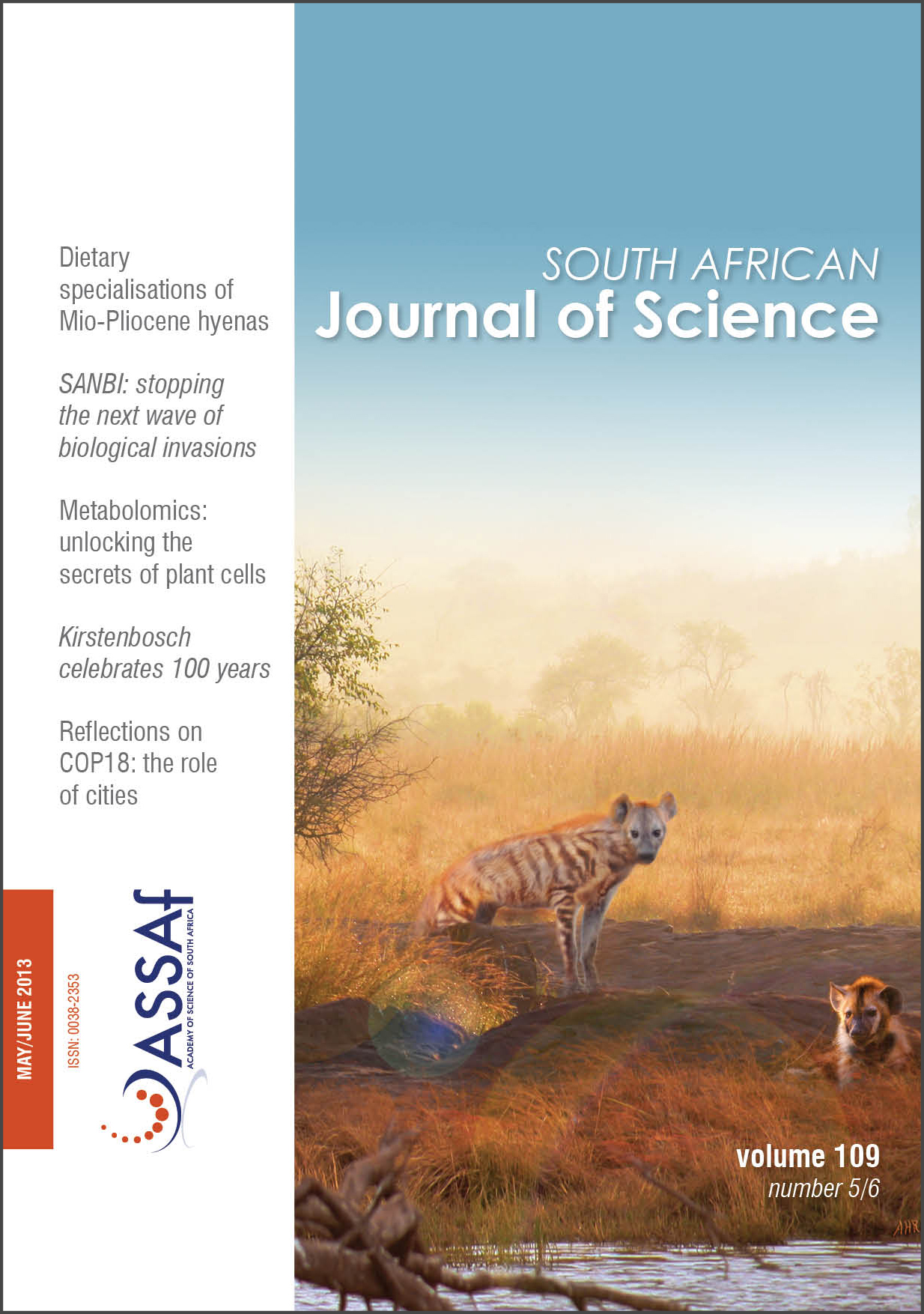Beyond just species: Is Africa the most taxonomically diverse bird continent?
DOI:
https://doi.org/10.1590/sajs.2013/20120002Keywords:
systematics, avian diversity, species, genus, conservationAbstract
We analysed avian diversity in 8 similar-sized regions of Africa, and in an additional 16 regions spread across the world; half of these 24 regions were tropical and the other half were temperate. For each region, counts of species, genus, family and order were recorded rather than only a species count. We assert that this approach gives more accurate insights into diversity patterns, as we show that in relatively species-rich parts of the world species are on average taxonomically more similar to each other than in species-poor areas. Northwestern South America is the world’s most species-rich region for birds, but we show that sub-Saharan Africa has greater diversity at higher taxonomic levels and is thus arguably the richest corner of the world for birds: the Mozambique–Zimbabwe region displays the highest diversity at the order level (with 30 orders), with all other sub-Saharan regions having between 27 and 29 orders each. Northern India is also extremely diverse (surprisingly so for a marginally temperate region) at all taxonomic levels below that of order. We hope that our study might generate further analyses of avian diversity beyond the species level.
Published
Issue
Section
License

All articles are published under a Creative Commons Attribution 4.0 International Licence
Copyright is retained by the authors. Readers are welcome to reproduce, share and adapt the content without permission provided the source is attributed.
Disclaimer: The publisher and editors accept no responsibility for statements made by the authors
How to Cite
- Abstract 366
- PDF 616
- EPUB 191
- XML 209












.png)